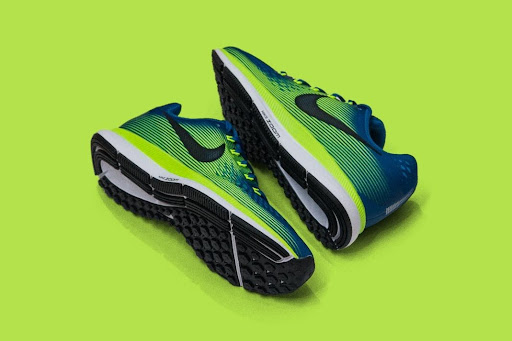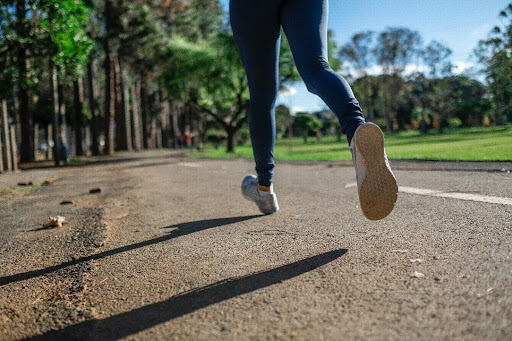Marathon Running Gear
Unlike shorter events if you have gear that is even slightly uncomfortable you can be sure that by the end of a marathon it will be very painful.
All sorts of problems with rubbing, chafing, forming of blisters etc can occur in a marathon which are totally preventable. Here we are going to give you some guidance on the do's and don'ts of marathon running gear.
Running Shoes
Fairly obviously, the most important gear you are going to buy is your shoes.
This is aimed at all runners, with respect to the marathon you'll need to make sure that you allow for your feet to swell on your long runs (many shops will suggest you buy shoes between 1/2 and 1 1/2 sizes bigger than normal for this reason).

Photo Running shoes
You may decide that you want to have two pairs of shoes, one for the heavy mileage of training and another for race day (often called racing flats). Generally, the race day shoes will be lighter and with less padding than your regular running trainers. It is vital that you have worn your race day shoes a number of times, over runs of significant distances before race day so you don't get blisters or any other unexpected shocks from them on the big day.
Most shoes have a limited number of miles in them before the shock absorbance is significantly reduced, you should be looking to replace your shoes about every 300-500 miles. Otherwise you increase your risk of injury or your shoes falling apart on a long run! If you find a pair that you really like, it is often worth getting the same sort again (or even buying several pairs, in case they get discontinued).
Clothing
Vests and Shorts
Most brands of these are reasonably good, so just make sure they are comfortable and don't have any seams that will rub significantly. As with your shoes you should train in your vest and shorts in advance of the race to check this out.
In the past, the advice was to wear natural fibres (particularly cotton) as it was kinder to the skin, however nowadays synthetic fabrics such as nylon and lycra are far superior in keeping you warm, dry and comfortable during a marathon, whatever the weather. Try to pick materials that are breathable and sweat-wicking, as these will wick away sweat, enabling it to evaporate and reducing the likelihood of chafing.
Sports Bra
Clearly just for women! There are no muscles in your breast, and without a good sports bra, breasts will bounce whilst running which is not only uncomfortable but can damage the ligaments supporting them. This makes choosing the right sports bra as important as selecting a pair of running shoes. There are two main types to choose from, a compression bra (which looks like a crop top) or an encapsulation bra (which looks like a normal bra but with extra support). Sports bras may feel tighter than normal bras but this means they will support you during exercise, reducing any bouncing to prevent back and chest pain. Whichever type you go for, just make sure it is comfortable for you.
Outer Clothes
You will have several requirements from the other clothing you purchase. As during many months of training it is likely you will face various weather conditions (and potentially on the big day itself) so will need gear to keep you:
- Warm
- Dry
- Cool (by letting your body heat escape)
This all needs to be done with a minimum of weight in the clothing.
We suggest that you'll need to following in the course of normal preparations for a marathon
- T-shirts - ideally made from wicking material.
- Running Leggings and shorts
- Running Base layer - for colder days, these should fit like a second skin and keep you warm by trapping your body heat.
- Lightweight Running Fleece - not too baggy, generally these should be fairly thin (you could wear two if it is really cold) and well fitted.
- Tracksuit trousers - for warming up and cooling down
- Waterproof Layer - a top or jacket (preferably breathable) is a must. You might also want to buy trousers for warming up or down in.
- Good socks - these will help reduce blisters, like the rest of your clothing they should be breathable and quick drying. Modern socks often have padding in the arch, toe and heel to protect these areas which absorb the most impact when running. Again, make sure you have trained over a significant distance in the socks and shoes you wish to wear on race day to avoid any unexpected discomfort on race day itself.

Photo Jogging
This may sound like a lot, but for a couple of hundred pounds you'll have enough gear to last you through several marathons!
Remember, if this all seems a bit daunting, we can put together a schedule prepared specifically for you from our team of experienced coaches with our Online Coaching.
